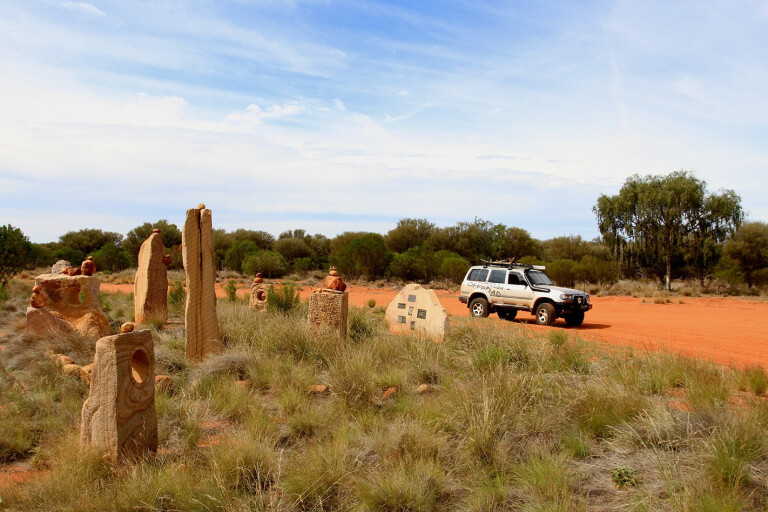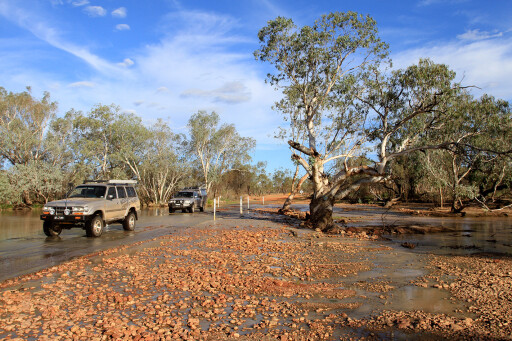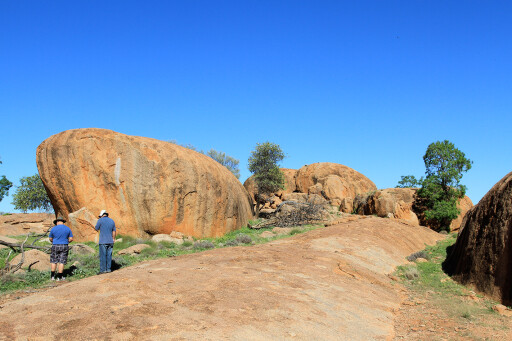
HALFWAY along the Dowling Track, which runs from Bourke in western NSW to Quilpie in Queensland’s outback, is a special national park with a host of natural and manmade phenomena.
Stunning landscapes and a vast lake system occupy Currawinya National Park – plus it’s the home of the endangered Bilby.
The park is located 20km north of Hungerford in outback Queensland, and you need to be self-sufficient with all camping, water and food supplies. The settlement of Hungerford comprises of several houses and an old pub, so the chances of getting supplies here are next to none – the nearest supply centre is 170km northeast at Cunnamulla, or 220km south at Bourke. There’s also no phone service out here, so getting help may take time.

Of the several spots to camp within Currawinya the most popular is the Ourimperee camping area beside the billabongs of the Paroo River system, where campers can relax under the shade eucalypts and red river gums. Other camp spots – with very basic facilities – can be found near the old shearing shed as you enter the park, or further north towards the old ruins of Caiwarro Homestead.
It’s easy to lose a day or two in the park simply by watching resident emus, several species of kangaroos, wild pigs and a host of birdlife. Fishing is allowed in the billabongs, but, unfortunately, European carp has infested the waterways – we caught a few using light gear. Once caught you do need to destroy and throw the dead fish away from camp, as feral pigs wander through at night.
Explore Conondale National Park: Queensland
The more adventurous can explore Currawinya’s unusual lake system, which is a 35km drive to the west along the sandy tracks that run parallel to Kaponyee Creek. The system is unusual as the nearby Lake Numalla has fresh water, while Lake Wyara (only 6km away) has salt water – researchers have found the water here can be up to 10 times saltier than the ocean. Both of these lakes are a haven for water birds – from coastal dwellers to inland varieties – and there are often thousands of birds here at any one time. There’s no camping at the lakes but there are several shelters where you can learn more about them, and swimming is permitted in Lake Numalla.

Located at the northern end of the park are the ruins of the old Caiwarro Homestead, built in the late 1880s. It’s still possible to wander among the ruins of several buildings and explore the levee bank that was built to protect the station from floodwaters. There’s also a tennis court, old machinery and several garden areas that once stood proud in this vast and remote area. It has been reported that back in 1906 there were 20 shearers working at Caiwarro, with about 60,000 sheep.
At one stage, when more than 100 workers were on the station, three cricket teams were formed and matches were played every Sunday. Caiwarro station was eventually shut down in 1971 after many severe floods and droughts, even though as many as 25 bores were sunk looking for good water. National Parks soon took over Caiwarro and Currawinya and placed a dog-proof fence around the properties. Currawinya is now home of the endangered Bilby, and an electrified Bilby compound has been set up in a ‘secret’ location to keep natural predators away. Funded by public donations, the breeding program is keeping these desert bandicoots alive.
The old shearers’ shed, located 2km inside the park’s entry, has several information boards where you can learn about the Bilby breeding program. Once in the shearing shed, let your mind wander and imagine the hardship that must have been endured out here in this remote location – summers would have been stifling hot in this big tin shed and, combined with flies and the stench of sheep and sweat, it would have been a tough slog. A 10-head shearing station, bale compressors and an old stone wheel to sharpen shears and knives all still stand. The shed smells like it was used recently and the timber decking feels like a sheep’s oily wool.

To extend your stay in the park, a 15km drive to the west will see you encounter a natural wonder called ‘The Granites’. The surrounding landscape has weathered away due to the effects of wind and rain over millions of years, but these huge granite boulders – some as large as two-storey buildings – have stood the test of time. The views from the top of these rock formations across the vast tree-lined plains are nothing short of spectacular. Keep an eye out for unfortunate animals (goats and kangaroos) that have slipped and fallen to their doom in the crevasses, leaving only their dried-out skin and bones.
The roads within the park are recommended for well set-up 4WDs only, as maintenance is irregular and the corrugations will make your fillings fall out – this is true outback country. At times it can be extremely harsh, with long, sand-based roads cutting their way past mulga bushes, prehistoric gums and scrubland. However, when the rain arrives, billabongs and wetlands come alive to entice goats, dingoes and an array of birdlife.
Currawinya National Park is a special place and should be on every 4x4ers bucket list.

TRAVEL PLANNER
WHERE
Currawinya National Park is located 220km north-west of Bourke, just inside the Queensland border. The park lies on the banks of the Paroo River.
CAMPING
There are a number of camping locations – beside the Paroo River, beside Ourimperee waterhole, or near the Woolshed, where there are some basic facilities – and there’s plenty of room for camper trailers, tents and off-road caravans.
SUPPLIES AND FACILITIES
You will need to be very self-sufficient with all food, water, fuel and accommodation. The nearest town of Hungerford is 20km away, but it has no facilities and unreliable fuel supplies. The nearest town with any supplies is Cunnamulla (170km to the north) and Bourke (220km to the south). Fires are allowed within the park, but please check local warnings beforehand. Flushing toilets and bush showers are available nearby at the Woodshed. All rubbish must be carried out. There is no phone service within the park.
TRIP STANDARD
A 4WD is recommended for the park and its surrounding places of interest. The roads range from sandy, well-used tracks through to rocky creek crossings. After times of floods, be aware of washouts and corrugations. All roads are unsealed and are maintained on an irregular basis.
FURTHER INFORMATION
The most comprehensive up-to-date details can be found at www.nprsr.qld.gov.au/parks/currawinya. Camping fees are payable at the nearby ranger’s station or at the honesty box near Caiwarro Homestead. Fees are a reasonable $5.45 per person per night. Discounts apply for families.

COMMENTS